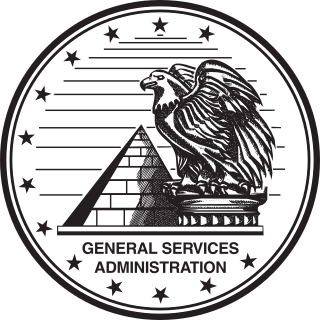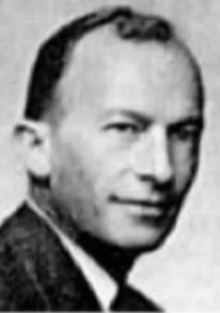
The Executive Office of the President of the United States (EOP) comprises the offices and agencies that support the work of the president at the center of the executive branch of the United States federal government. The office consists of several offices and agencies, such as the White House Office, the National Security Council, and the Office of Management and Budget.

The Office of Management and Budget (OMB) is the largest office within the Executive Office of the President of the United States (EOP). OMB's most prominent function is to produce the president's budget, but it also examines agency programs, policies, and procedures to see whether they comply with the president's policies and coordinates inter-agency policy initiatives.

The National Archives and Records Administration (NARA) is an independent agency of the United States government within the executive branch, charged with the preservation and documentation of government and historical records. It is also tasked with increasing public access to those documents which make up the National Archives. NARA is officially responsible for maintaining and publishing the legally authentic and authoritative copies of acts of Congress, presidential directives, and federal regulations. NARA also transmits votes of the Electoral College to Congress. It also examines Electoral College and constitutional amendment ratification documents for prima facie legal sufficiency and an authenticating signature.
In the United States government, independent agencies are agencies that exist outside the federal executive departments and the Executive Office of the President. In a narrower sense, the term refers only to those independent agencies that, while considered part of the executive branch, have regulatory or rulemaking authority and are insulated from presidential control, usually because the president's power to dismiss the agency head or a member is limited.

The National Geospatial-Intelligence Agency (NGA) is a combat support agency within the United States Department of Defense whose primary mission is collecting, analyzing, and distributing geospatial intelligence (GEOINT) in support of national security. Initially known as the National Imagery and Mapping Agency (NIMA) from 1996 to 2003, it is a member of the United States Intelligence Community.

The General Services Administration (GSA) is an independent agency of the United States government established in 1949 to help manage and support the basic functioning of federal agencies. GSA supplies products and communications for U.S. government offices, provides transportation and office space to federal employees, and develops government-wide cost-minimizing policies and other management tasks.

The Archivist of the United States is the head and chief administrator of the National Archives and Records Administration (NARA) of the United States. The Archivist is responsible for the supervision and direction of the National Archives.
Executive Schedule is the system of salaries given to the highest-ranked appointed officials in the executive branch of the U.S. government. The president of the United States appoints individuals to these positions, most with the advice and consent of the United States Senate. They include members of the president's Cabinet, several top-ranking officials of each executive department, the directors of some of the more prominent departmental and independent agencies, and several members of the Executive Office of the President.

David Sean Ferriero is an American librarian and library administrator, who served as the 10th Archivist of the United States. He previously served as the Director of the New York Public Library and as the University Librarian and Vice Provost for Library Affairs at Duke University. Prior to his Duke position, he worked for 31 years at the Massachusetts Institute of Technology library. Ferriero was the first librarian to serve as Archivist of the United States.
The Joint Staff Information Management Division (IMD) is one of two divisions which make up the Joint Staff Secretariat (SJS) of the United States Joint Chiefs of Staff currently located in the Pentagon in Arlington, Virginia (USA). The other division is called Actions Division (AD) which manages the daily workflow of the staff.
The Federal Works Agency (FWA) was an independent agency of the federal government of the United States which administered a number of public construction, building maintenance, and public works relief functions and laws from 1939 to 1949. Along with the Federal Security Agency and Federal Loan Agency, it was one of three catch-all agencies of the federal government pursuant to reorganization plans authorized by the Reorganization Act of 1939, the first major, planned reorganization of the executive branch of the government of the United States since 1787.

The executive branch of the government of Puerto Rico is responsible for executing the laws of Puerto Rico, as well as causing them to be executed. Article IV of the Constitution of Puerto Rico vests the executive power on the Governor—whom by its nature forms the executive branch.
The Office of the Chief of Staff of the Governor of Puerto Rico is the umbrella organization and government agency of the executive branch of the government of Puerto Rico that manages and oversees all the executive departments of the government of Puerto Rico and almost all executive agencies. The Office is headed by the Puerto Rico Chief of Staff and is composed by the Governor's Advisory Board and all other staff appointed by the chief of staff. The Office of the Chief of Staff is ascribed to the Office of the Governor.

Theodore Roosevelt Schellenberg was an American archivist and archival theorist. Schellenberg's publications and ideas are part of the foundation for archival theory and practice in the United States. In particular, Schellenberg is known for pioneering American archival ideas about appraisal.

The Presidential and Federal Records Act Amendments of 2014 is a United States federal statute which amended the Presidential Records Act and Federal Records Act. Introduced as H.R. 1233, it was signed into law by President Barack Obama on November 26, 2014.

In the United States, the National Archives facilities are facilities and buildings housing the research and agency services of the country's National Archives and Records Administration. Within the organization of the National Archives, the upkeep of its facilities falls under the National Archives Facilities and Property Management Office.

The National Archives at College Park is a major facility of the National Archives and Records Administration of the United States which is located in College Park, Maryland. The facility serves as the primary base of operations for the bulk of the senior offices within the organization of the National Archives. The facility operates in tandem with the National Archives Building in Washington, D.C. which serves as the ceremonial headquarters of the National Archives in that this is where the Archivist of the United States maintains their primary office.
Congressional archives consist of records and personal papers that document the history and activities of the United States Congress. The National Archives and Records Administration’s Center for Legislative Archives collects and preserves the official administrative and legislative records of the U.S. Senate and the U.S. House of Representatives. The personal papers of individual senators and representatives, broadly called congressional collections, are the private property of members of Congress. Many members choose to donate their papers to repositories where their records are preserved and made available to the public.

Emmett Joseph Leahy was an American archivist and entrepreneur. He was a pioneer in the discipline of records management. After working in the National Archives and then during World War II in the United States Navy, he entered private business as a consultant in records management and as a records storage provider. He also participated in the two Hoover Commissions in improving the efficiency and effectiveness of government.













